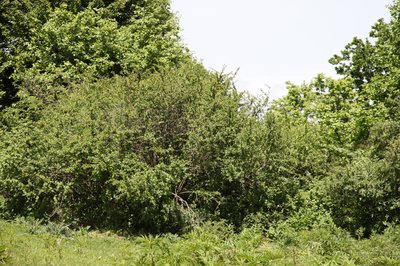Berberis rust survey in the Ug99 pathway in CWANA

In collaboration between ICARDA, CIMMYT and GRRC a draft system for the data entry, storage and display of rust on barberry is now available after login at the Wheat Rust Toolbox. This project is part of the Durable Rust Resistance in Wheat project. The overall aim of this study is to identify rust species present on Berberis spp. in the CWANA area in order to determine the importance of Berberis spp. as alternate host for agriculturally important rust species in this area.
The immediate objective of this system is to inform about:
- Where rust on Barberry was sampled
- What type of rusts were found on Barberry - based on molecular diagnostics at the Global Rust Reference Centre
- Which species of Barberry was infected with rust
For further information please contact Kumarse Nazari (ICARDA) or Annemarie F. Justesen (GRRC)
Methods
Berberis leaves infected with aecia were collected in the CWANA project in Iran, Azerbaijan, Uzbekistan, Georgia, and Tajikistan.. Dried infected Berberis leaves were sent to the Global Rust Reference Center (GRRC). Single aecial clusters (eq. single lesions) were cut from the Berberis leaves and subjected to DNA-extraction. DNA regions of the translation elongation factor gene (TEF1α), beta-tubuline gene (β-tub) or the Internal Transcribed Spacer (ITS) region were PCR amplified with primers which specifically target the fungal DNA. The PCR products were sequenced and the sequences compared to sequences in GenBank at NCBI and “in house sequences” of Puccinia species in order to identify the rust species present on the Berberis leaves.
The Host-Pathogen Database in the Wheat Rust Toolbox was expanded to cover Berberis spp. as an alternate host for several Puccinia species. A web form for entering the results of sequencing was included as well as maps and tables for display of the results.
Results
Currently, results are only available in the Wheat Rust Toolbox after login. The preliminary results are available as a map indicating what species of rust was found on barberry at specific locations and as pie charts indicating the frequencies of rust species found by country and year. There are 133 locations where barberry was surveyed for rust. On each location several samples were taken. The majority of the tested aecial clusters are assigned to the Puccinia graminis species complex. Whether aeciospores of these can infect cereals is not known since host specificity tests by inoculating potential grass and cereal hosts were not made. However, diagnostic test for Ug99 will be applied to determine presence/absence of wheat stem rust of the Ug99 race group. None of the aecia were diagnosed as P. striiformis infecting cereals.
